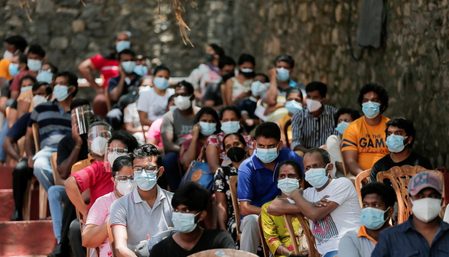SUMMARY
This is AI generated summarization, which may have errors. For context, always refer to the full article.

The International Monetary Fund (IMF) gave the Philippines $2.8 billion (P139.4 billion) worth of special drawing rights (SDRs), boosting the country’s foreign exchange buffer and adding a funding source for COVID-19 expenses.
The allocation is part of the IMF’s $650 billion in SDRs, the largest distribution made in the multilateral lender’s history.
What’s an SDR?
An SDR is not a currency, but an international reserve asset by the IMF to provide liquidity to member countries. In the Philippines’ case, it was allocated 1.958 billion SDRs, which is equivalent to about $2.8 billion.
SDRs are backed by dollars, euros, sterling, yen, and yuan.
To spend its SDRs, the Philippines must first exchange them for underlying hard currencies and find a willing exchange partner country.
“SDRs are a precious resource and the decision on how best to use them rests with our member countries. For SDRs to be deployed for the maximum benefit of member countries and the global economy, those decisions should be prudent and well-informed,” said IMF Managing Director Kristalina Georgieva.
The IMF’s last SDR distribution came in 2009 when member countries received $250 billion in reserves to help ease the global financial crisis.
How will PH use the money?
Bangko Sentral ng Pilipinas Governor Benjamin Diokno said the newly allocated SDRs would be reflected in the country’s gross international reserves (GIR) until the national government determines how to use them.
“The SDR allocation can be used to boost foreign exchange reserves and reduce reliance on debt, create space for countries to step up effort against the crisis, and support reforms to the economy,” Diokno said.
GIR refers to the country’s total foreign exchange flow and ensures that a nation will not run out of foreign exchange it can use in case of external shocks like the pandemic.
The Philippines’ GIR stood at $107.2 billion as of end-July. It is expected to hit a record high of $115 billion in 2021.
Transparency
Economist Winnie Monsod said in her recent column in the Inquirer that the IMF allocation essentially stops the government’s “moaning and groaning” from not having enough funds to spend for the pandemic.
President Rodrigo Duterte has repeatedly said that the country has “no more funds.” His economic managers have also practiced a prudent fiscal program and have aimed to narrow the budget deficit.
Experts, however, countered the government’s claim by saying that funds were allocated for infrastructure projects that are not urgent.
The economic managers’ strategy led to a handout of only P1,000 per person or up to P4,000 per low-income family when strict lockdowns were reimplemented in some areas in August.
“This is not a loan to us. It is free…. The government gets this P140-billion bonanza from the IMF, which it should use transparently and properly,” Monsod said. – Rappler.com
Add a comment
How does this make you feel?



![[Time Trowel] Evolution and the sneakiness of COVID](https://www.rappler.com/tachyon/2024/02/tl-evolution-covid.jpg?resize=257%2C257&crop=455px%2C0px%2C1080px%2C1080px)


There are no comments yet. Add your comment to start the conversation.